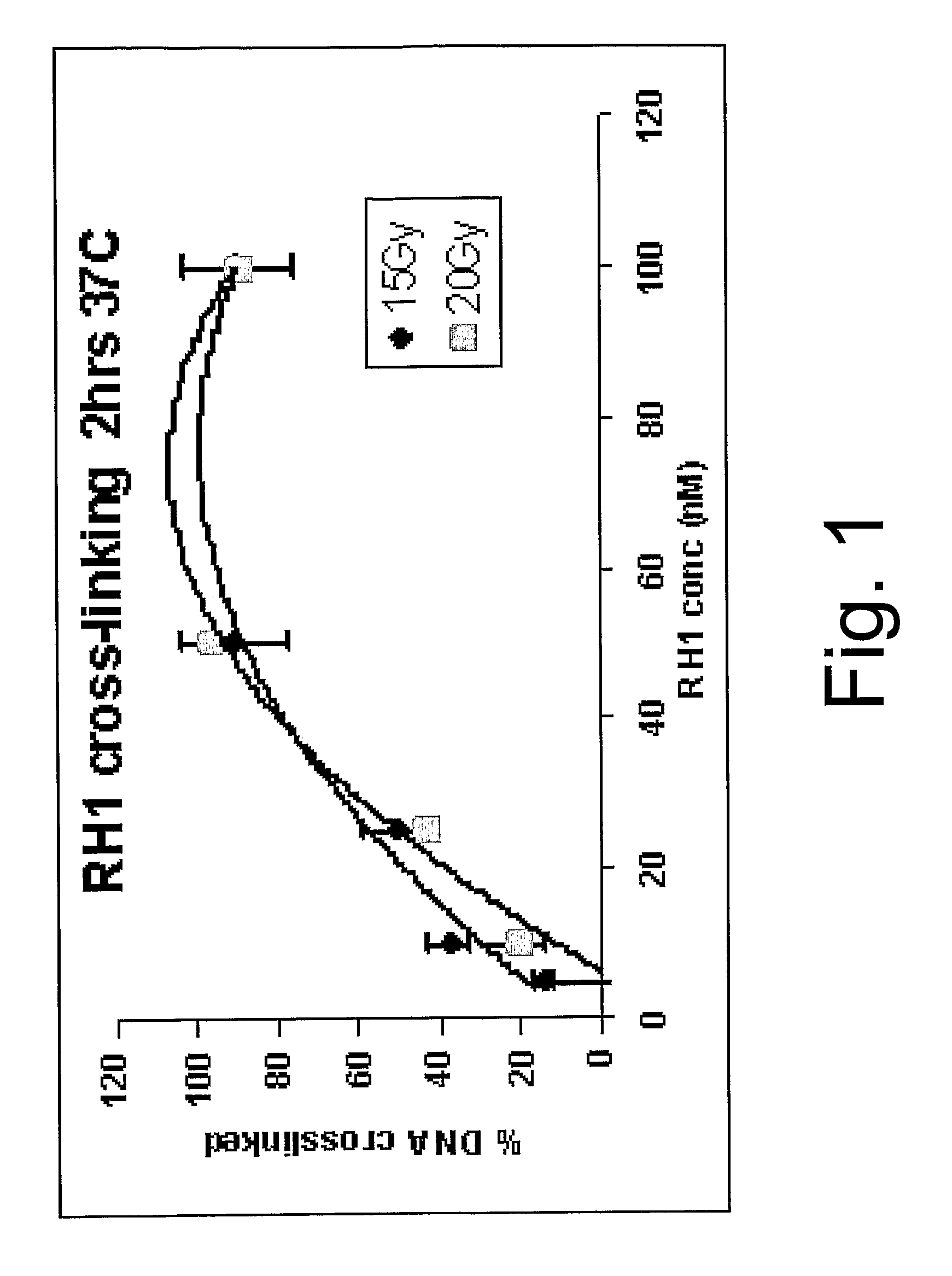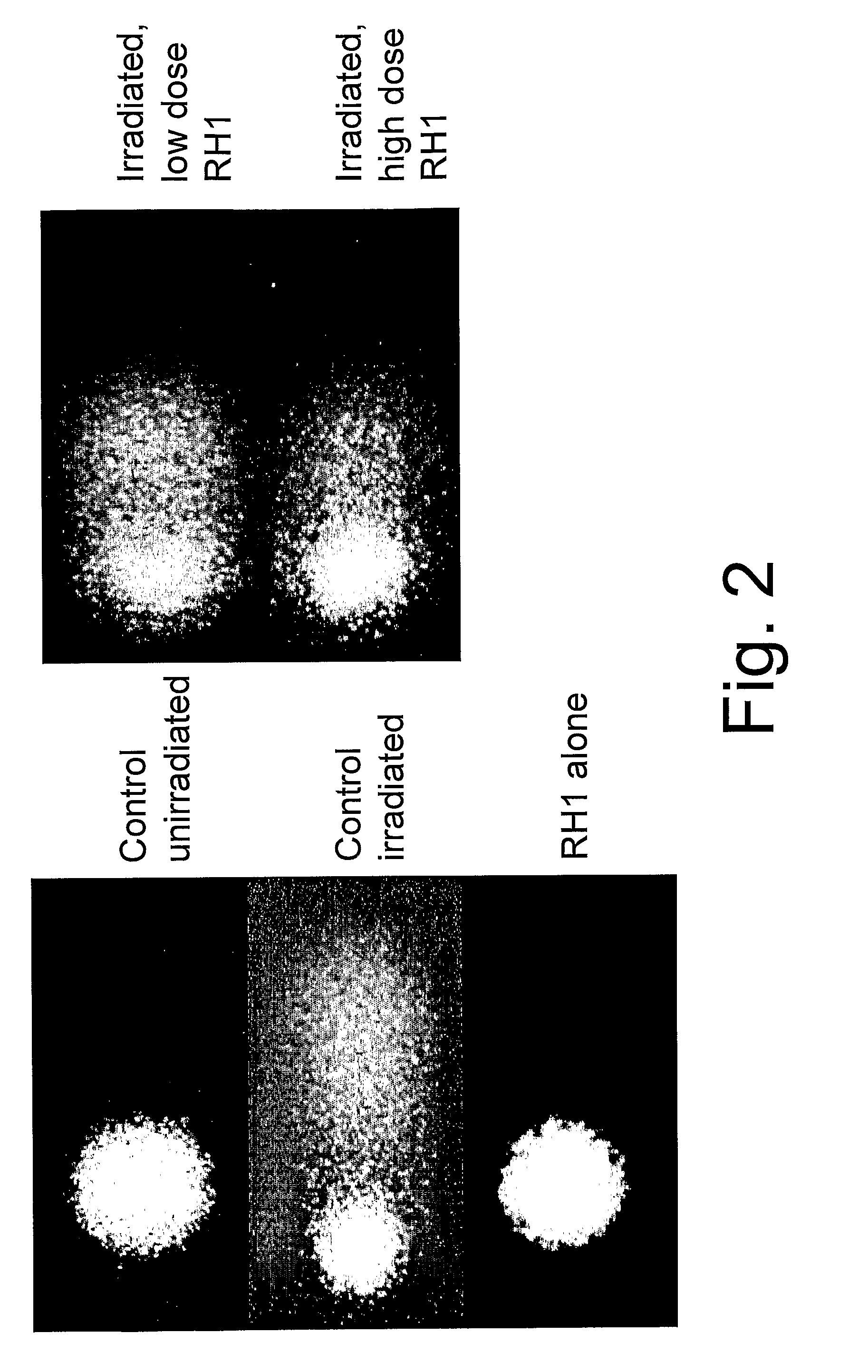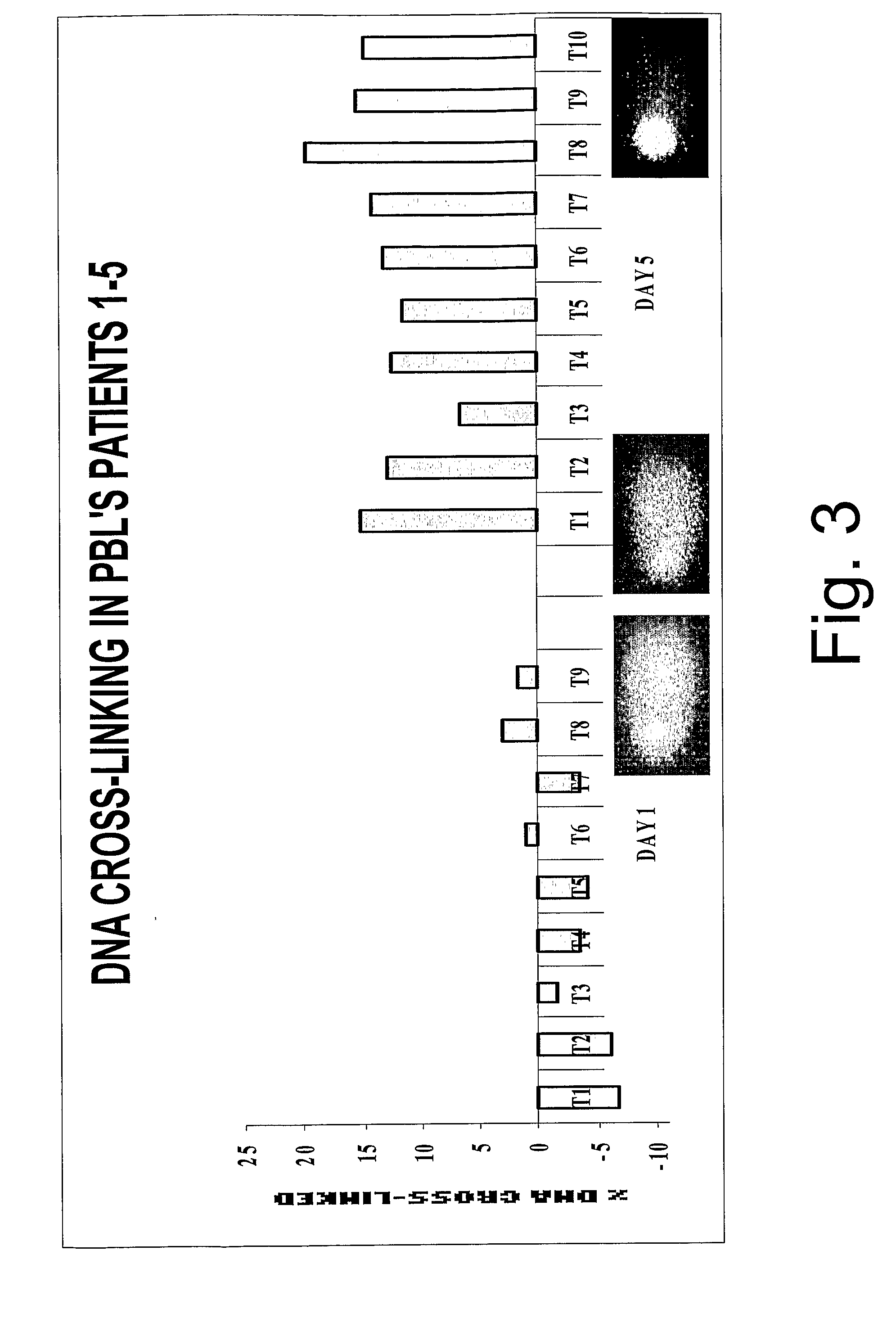Compounds And Compositions For Treatment Of Cancer
a technology of compounds and compositions, applied in the field of anti-tumour compounds, can solve the problems of inability to predict water solubility, toxicity, suitability as a bioreduction prodrug, and inability to understand the mechanism involved or the structural features which may promote efficient dna cross-linking, and achieve the effects of strong dna cross-linking agent, anti-tumour agent, and easy activation
- Summary
- Abstract
- Description
- Claims
- Application Information
AI Technical Summary
Benefits of technology
Problems solved by technology
Method used
Image
Examples
Embodiment Construction
[0069] Specific details of the best mode contemplated by the inventors for carrying out the invention are set forth below, by way of example. It will be apparent to one skilled in the art that the present invention may be practiced without limitation to these specific details.
[0070] As discussed above, a number of quinones have been suggested for the treatment of cancer and some of these have been tested by the present inventors to assess their suitability as cross-linking agents and to assess toxicity effects. The results of these tests are set out in Table 2.
TABLE 2DTDReason forNameCompoundsubstrateFailureMitomycin CBenzoquinonePoorN / AE09IndolquinoneModerateRenal3-HYDROXYMETHYL-toxicity5-AZIRIDINYL-1METHYL-2-[1H-INDOLE-4,7-DIONE]-PROPANOLAZQAziridinylbenzo-ModerateNo clinical3,6-diaziridinyl-quinonebenefit2,5-bis-(carboethoxyamino)1,4-benzoquinoneBZQAziridinylbenzo-PoorNo clinical3,6-diaziridinyl-quinonebenefit2,5-bis-2(-hydroxyethylamino)1,4-benzoquinoneMeDZQAziridinylbenzo-Mo...
PUM
| Property | Measurement | Unit |
|---|---|---|
| composition | aaaaa | aaaaa |
| concentration | aaaaa | aaaaa |
| time | aaaaa | aaaaa |
Abstract
Description
Claims
Application Information
 Login to View More
Login to View More - R&D
- Intellectual Property
- Life Sciences
- Materials
- Tech Scout
- Unparalleled Data Quality
- Higher Quality Content
- 60% Fewer Hallucinations
Browse by: Latest US Patents, China's latest patents, Technical Efficacy Thesaurus, Application Domain, Technology Topic, Popular Technical Reports.
© 2025 PatSnap. All rights reserved.Legal|Privacy policy|Modern Slavery Act Transparency Statement|Sitemap|About US| Contact US: help@patsnap.com



